You'll want to avoid mixing peppermint with lemon, thyme, or ylang ylang, as these combinations can trigger respiratory issues and stomach irritation. Be cautious with citrus oil blends like grapefruit and lemon, which increase skin sensitivity to sunlight. Don't combine cinnamon and clove, as they can cause skin reactions even in small amounts. Understanding the chemical properties and proper dilution methods will help you create safe, effective perfume formulations.
Common Toxic Oil Combinations in Perfumery
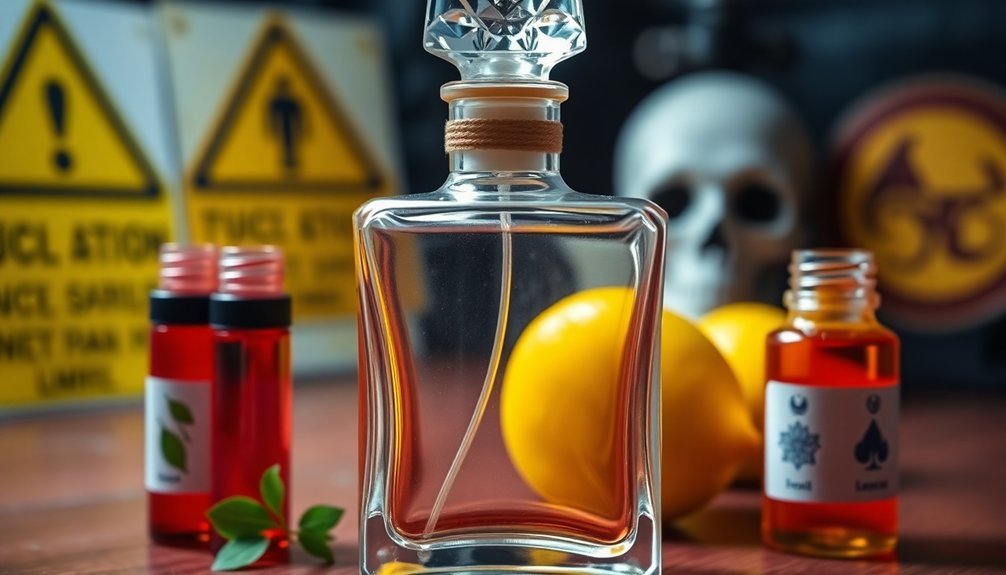
While essential oils can create beautiful fragrances, certain combinations pose significant health risks in perfumery.
You'll want to avoid mixing peppermint with lemon, as this combination can produce an unpleasant odor and might cause digestive issues if you're exposed to large amounts.
Similarly, combining peppermint with thyme isn't recommended since it can trigger stomach irritation due to the concentrated menthol content.
Be cautious with peppermint and ylang ylang mixtures, as they can irritate your respiratory system.
When working with citrus essential oils, don't blend grapefruit and lemon together, as this combination increases your skin's sensitivity to sunlight.
Additionally, you should exercise extreme care when mixing potent oils like cinnamon and clove, as they can cause skin reactions even in small concentrations.
Understanding Chemical Reactivity Between Oils
When you're creating perfume blends, you must consider the oxidation risks that occur between incompatible oils, such as peppermint and lemon, which can produce unpleasant chemical reactions.
You'll need to pay special attention to citrus oils, as they're particularly reactive and can cause skin irritation when improperly combined with other essences like ylang ylang.
Base note pairs require careful consideration too, as certain combinations can trigger respiratory issues or create potentially toxic compounds that compromise your blend's safety.
Oxidation Risks When Mixing
Understanding the oxidation risks of essential oils is crucial for safe perfume formulation, as these chemical reactions can transform harmless ingredients into potential skin irritants.
When you're mixing oils, you'll need to be especially careful with citrus-based ingredients, which oxidize quickly and can become phototoxic.
Here's what you should keep in mind to minimize oxidation risks:
- Don't mix fresh oils with older, potentially oxidized ones, as this can create unpredictable and harmful chemical interactions.
- Pay special attention to monoterpene-rich oils like lemon and orange, which oxidize faster than sesquiterpene-heavy oils like vetiver.
- Always store your oils in dark glass containers, keep them cool, and use them within one year of opening to maintain their safety and effectiveness.
These precautions will help protect both your formulations and your customers' skin.
Citrus Oil Safety Hazards
Building on our discussion of oxidation risks, citrus oils present some of the most significant safety concerns in perfumery.
You'll need to be especially careful when working with bergamot, lemon, and lime oils, as they contain phototoxic compounds that can cause severe skin reactions when exposed to sunlight.
Don't mix citrus oils with peppermint or thyme, as these combinations can trigger skin irritation and breathing problems.
To protect your skin, keep citrus oil concentrations at or below 0.5% in any leave-on products.
You'll also want to watch for degradation when blending citrus oils with other essences, as their volatile nature can lead to skin-irritating oxidized compounds.
Always store your citrus oils properly and follow safe dilution guidelines to prevent adverse reactions.
Incompatible Base Note Pairs
Despite their alluring individual profiles, certain base note combinations can create significant problems in perfume formulation.
When you're blending base notes, you'll need to be particularly cautious about specific pairings that can result in unpleasant or potentially harmful effects.
Here are three critical base note combinations to avoid:
- Cedarwood with Vetiver – These notes create a disharmonious blend due to their conflicting chemical properties.
- Patchouli with Myrrh – This combination produces an overpowering, cloying effect that can overwhelm your perfume.
- Sandalwood with Benzoin – Their similar sweet profiles clash, resulting in a muddled scent lacking distinction.
Additionally, be mindful that some base note combinations, like Frankincense with Oakmoss or Lavender with Tea Tree, can increase the risk of skin sensitization and allergic reactions in sensitive individuals.
High-Risk Essential Oil Pairings
When working with essential oils in perfumery, certain combinations can pose significant risks to both the final product and the user's well-being.
You'll want to avoid mixing peppermint with several other oils due to its reactive nature. Combining it with lemon creates an unpleasant odor that can ruin your blend, while pairing it with thyme may cause stomach discomfort.
Similarly, mixing peppermint with jasmine can trigger respiratory issues.
You should also exercise caution with citrus combinations. Grapefruit and lemon oils together can increase photosensitivity, potentially causing skin irritation when exposed to sunlight.
Additionally, if you're considering a blend with peppermint and ylang ylang, be aware that this combination might lead to skin reactions in sensitive individuals.
Safety Limits for Oil Mixtures

To guarantee your safety in perfumery, you'll need to carefully monitor the concentration levels of each essential oil in your blends. Understanding safe usage limits is essential, as different oils have varying thresholds.
For instance, while frankincense is relatively flexible, cinnamon bark shouldn't exceed 0.07% in your formula.
When combining multiple oils, follow these essential guidelines:
- Keep high-sensitizing oils like clove and cinnamon under 0.5% in skin applications to prevent irritation.
- Limit phototoxic citrus oils such as bergamot and lemon to 0.4% in cosmetic formulations.
- Calculate the total concentration of all oils, as their effects can be cumulative.
Always consult IFRA guidelines for specific limits on individual ingredients, as they provide detailed safety information for over 3,600 fragrance materials.
Photosensitive Oil Combinations
Photosensitive oils pose a significant risk when combined, even in small amounts. When you're creating perfumes with photosensitive essential oils like bergamot, lemon, or lime, you'll need to be extra cautious about sun exposure. These oils contain furocoumarins that can trigger severe skin reactions up to 24 hours after application, regardless of what other oils you mix them with.
| Oil Type | Safety Precaution |
|---|---|
| Bergamot | Night use only |
| Lemon | Dilute below 2% |
| Lime | Avoid sun exposure |
| Orange | Use in indoor scents |
| Grapefruit | Low concentration |
You can't neutralize photosensitive properties by mixing with non-phototoxic oils, so it's essential to formulate these blends specifically for nighttime use or indoor applications. Always warn your customers about potential UV sensitivity when using citrus-based perfumes.
Skin Irritation Risk Factors
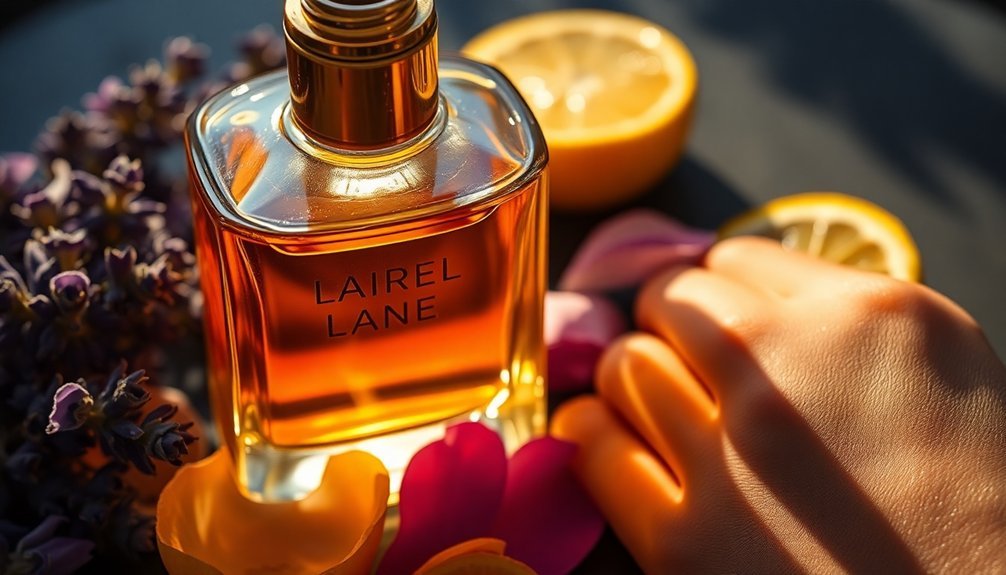
When you're working with essential oils, you'll need to perform a patch test on a small area of skin to check for potential allergic reactions before applying any new blend.
Combining high-sensitizing oils like cinnamon bark with other strong oils dramatically increases your risk of skin irritation, so keep concentrations extremely low (around 0.07%).
You'll also want to avoid mixing peppermint with lemon oils, as this combination can create an unpleasant scent and increase the likelihood of skin sensitivity.
Patch Testing Safety Protocol
Since working with concentrated essential oils carries inherent risks, proper patch testing serves as a critical first line of defense against adverse skin reactions.
You'll need to dilute your chosen oil and apply it to your inner forearm, waiting 24-48 hours to monitor for any skin irritation or allergic responses.
When conducting patch tests, follow these essential steps:
- Document each oil you're testing and maintain detailed records of any reactions.
- Use carrier oils for dilution, especially if you have sensitive skin or known allergies.
- Exercise extra caution with high-sensitization oils like cinnamon bark and citrus varieties.
Common Irritant Oil Combinations
Understanding hazardous essential oil combinations can help you avoid painful skin reactions and respiratory issues in your perfume formulations.
You'll need to be particularly cautious when working with peppermint essential oils, as they create problematic reactions with several other oils. Don't combine peppermint with lemon, as this mixture produces an unpleasant odor and increases skin irritation risk.
Similarly, avoid blending peppermint with thyme or ylang ylang, as these combinations can cause gastrointestinal and respiratory issues respectively.
Exercise extra caution with citrus oils like bergamot and lemon, which cause photosensitivity and skin darkening when exposed to sunlight.
Additionally, you shouldn't mix highly sensitizing essential oils like cinnamon and clove with other irritant oils, as this greatly increases the risk of adverse skin reactions.
Proper Dilution Methods for Blending
The three foundational aspects of proper dilution in perfumery involve accurate measurement, appropriate carrier oil selection, and strict adherence to safety guidelines.
When you're blending essential oils, you'll need to follow proper dilution methods that prioritize both safety and consistency in your formulations.
Key steps for safe dilution:
- Use a precise scale that measures to two decimal points of a gram
- Keep detailed records of weights and ratios for each ingredient
- Never exceed recommended concentration limits (10-25% for perfumes)
You'll always want to dilute your essential oils with carrier oils before skin application.
This is especially important for highly sensitizing oils like cinnamon bark, which shouldn't exceed 0.07% concentration.
Storage Considerations for Mixed Oils
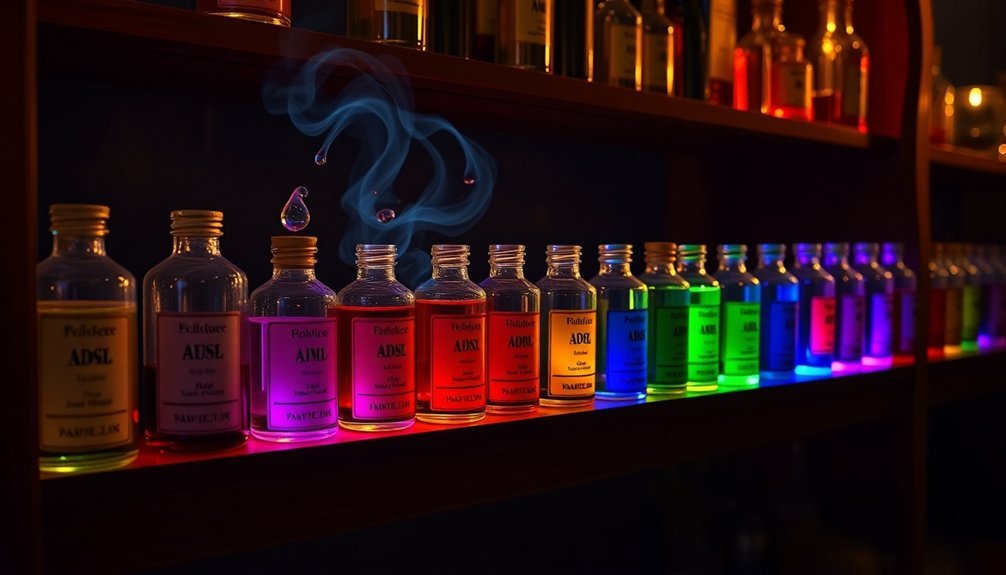
Proper storage makes all the difference between preserving your mixed oils and watching them deteriorate prematurely. When it comes to storage considerations for your quality essential oils, you'll need to focus on protecting them from their biggest enemies: light, heat, and air exposure.
| Storage Element | Impact on Oils |
|---|---|
| Container Type | Dark glass preserves, plastic contaminate |
| Temperature | Cool extends life, heat degrades |
| Organization | Labels protect, chaos risks waste |
Always store your blends in dark glass containers and keep them in your refrigerator to maintain their potency. You'll want to label each bottle with the blend date and ingredients – this isn't just about organization, it's about safety. Remember to regularly inspect your oils for signs of spoilage, like unusual colors or smells, and discard any suspicious blends immediately.
Testing Protocols for New Combinations
Safe experimentation with new oil combinations requires methodical testing before any large-scale production or skin application.
You'll need to document every ingredient ratio and conduct patch tests on a small area of skin to prevent adverse reactions. Before mixing essential oils, always review their safety data sheets to understand potential interactions and hazards.
For successful testing of new combinations, follow these critical steps:
- Set up a well-ventilated workspace with proper safety equipment
- Test each new blend on a 1-inch patch of skin, waiting 24 hours for any reaction
- Allow your mixed oils to mature for up to 48 hours before evaluating their final aroma
Remember to keep detailed records of your formulations, including any observations about skin sensitivity or unexpected reactions.
This documentation will prove invaluable for future reference and adjustments.
Professional Guidelines for Oil Mixing
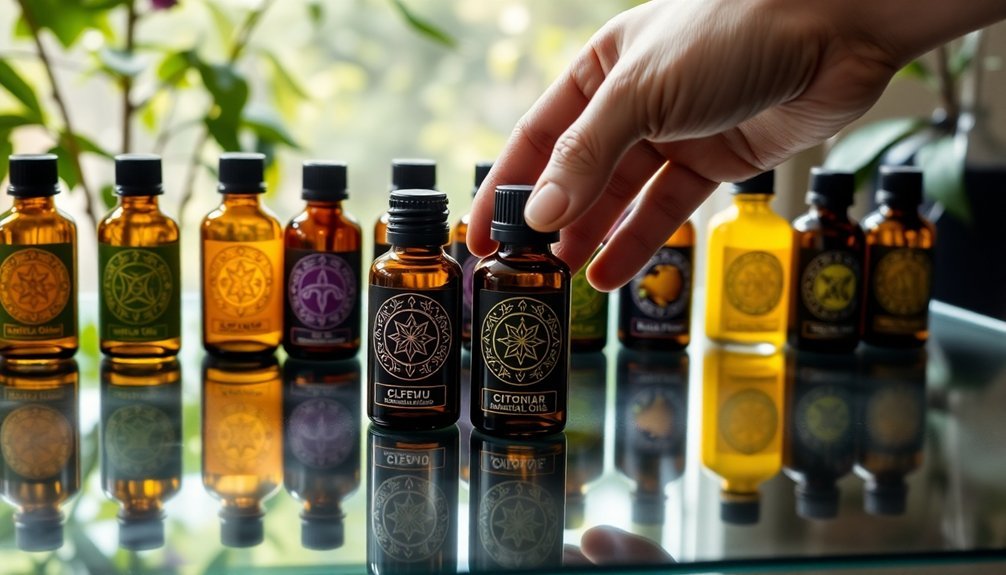
When mixing essential oils professionally, you'll need to follow strict guidelines to prevent adverse reactions and maintain product integrity.
Always use glass or ceramic containers, as metallic or plastic ones can compromise your blend's quality through unwanted chemical reactions.
Keep meticulous records of your essential oil combinations and ratios, since even minor adjustments can greatly impact both scent and safety.
Before creating any blend, you must review the safety data sheets (SDS) for each oil to understand potential hazards and safe usage levels.
Be particularly cautious with combinations like peppermint with lemon or thyme, which can cause unpleasant odors or stomach issues.
Similarly, avoid mixing peppermint with ylang ylang or grapefruit with lemon, as these combinations may trigger skin irritation.
Dangerous Concentration Thresholds
Understanding concentration thresholds represents a vital aspect of safe essential oil blending, as even small variations can mean the difference between therapeutic benefits and harmful effects.
You'll need to pay special attention to highly sensitizing essential oils like clove and nutmeg, which require lower concentrations to prevent skin reactions.
When working with multiple essential oils, you must carefully track their combined percentages to avoid exceeding safe limits.
Here are vital thresholds to remember:
- Cinnamon bark oil: Keep concentration at or below 0.07%
- Citrus essential oils: Limit to 1-2% in skin-contact products
- High-sensitizing oils (clove, nutmeg): Use minimal amounts, following IFRA guidelines
Always research each oil's specific limits and consider their cumulative effects when blending, as combinations can amplify potential risks.
Regulatory Standards for Oil Blending

Beyond individual oil concentrations, regulatory frameworks provide essential guardrails for safe oil blending in perfumery.
While the IFRA regulations aren't legally binding in the US, you'll want to follow their guidelines as they represent the industry's gold standard for safety.
You'll need to stay current with IFRA's Transparency List, which covers more than 3,600 ingredients and their specific usage restrictions.
For example, you can't use more than 0.07g of Vetiver oil per 100g of your final formulation. These limits aren't arbitrary – they're based on thorough safety evaluations designed to prevent adverse reactions.
To maintain safe blending practices, you should regularly check for updates to IFRA regulations and adjust your formulations accordingly.
This proactive approach helps guarantee your creations remain both safe and compliant.
Emergency Response to Adverse Reactions
Despite the best safety precautions, adverse reactions to essential oil blends can occur unexpectedly. When this happens, you'll need to act quickly with a proper emergency response. First, stop using the product immediately and wash the affected area with mild soap and water.
For your safety, always keep these critical items readily available:
- Safety Data Sheets (SDS) for all oils in your collection
- A well-stocked first aid kit within easy reach
- Emergency contact numbers, including local poison control
If you experience severe symptoms like difficulty breathing or intense swelling, don't wait – seek emergency medical help right away.
Remember to document any adverse reactions you encounter, as this information will be valuable for both your future blending practices and healthcare providers who may need to treat you.
Frequently Asked Questions
Which Oils Should Not Be Mixed Together?
You shouldn't mix peppermint with lemon, thyme, ylang ylang, or jasmine. Also avoid combining grapefruit with lemon, and steer clear of mixing cinnamon with clove to prevent potential adverse reactions.
What Essential Oils Should Be Avoided?
You'll want to avoid mixing peppermint with lemon, thyme, ylang ylang, or jasmine. Also, don't combine grapefruit with lemon. These combinations can cause unpleasant odors, skin irritation, and respiratory issues.
What Is Bad in Fragrance Oils?
You'll want to avoid fragrance oils with undisclosed allergens, synthetic additives, or those exceeding IFRA safety limits. Watch out for phototoxic ingredients and poor-quality oils that can cause skin reactions or irritation.
What Is the 30/50/20 Rule for Essential Oils?
You'll create balanced fragrances by following the 30/50/20 rule: use 30% top notes (like bergamot), 50% middle notes (like jasmine), and 20% base notes (like cedarwood) in your essential oil blends.
In Summary
You've learned that certain oil combinations can pose serious risks in perfumery. Always check reactivity charts before blending and don't exceed safety thresholds. Remember to test photosensitive oils carefully, follow regulatory guidelines, and keep emergency protocols handy. When in doubt, consult professional resources or a qualified perfumer. Your knowledge of these dangerous combinations will help you create safer, more successful fragrances.
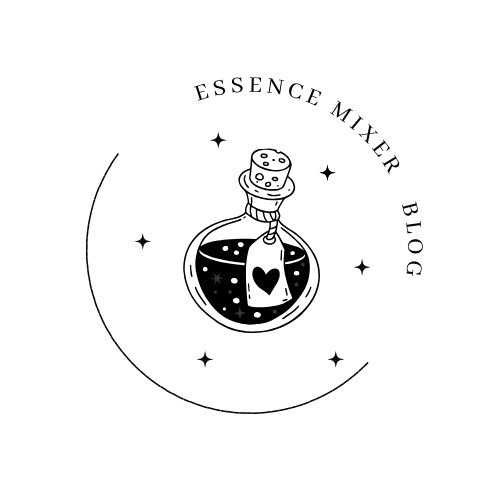




Leave a Reply